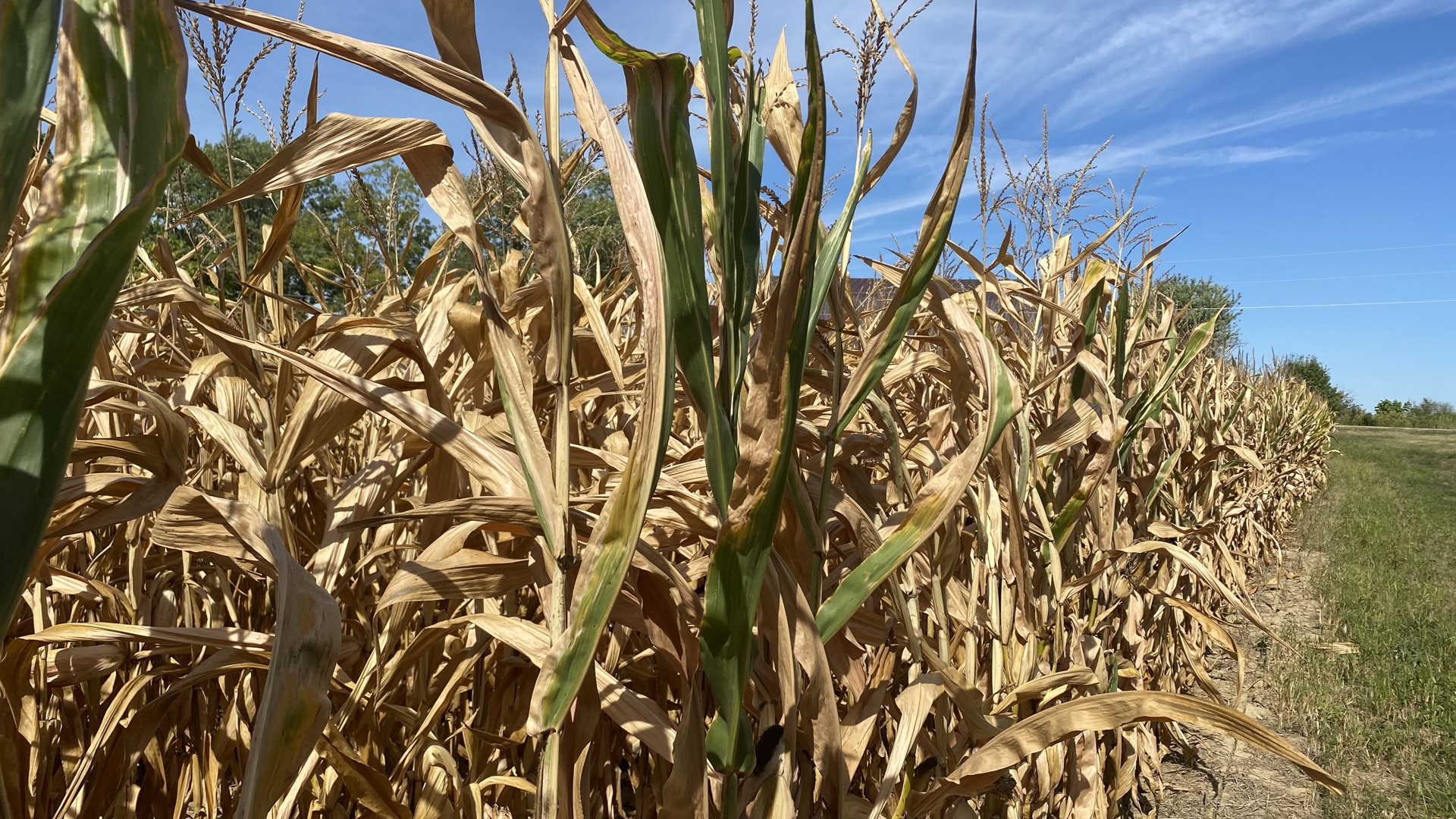COLUMBUS, Ohio — A farmer's fate is dependent on the weather, especially if there’s no irrigation.
At Lynd Fruit Farm in Pataskala, Andy Lynd says rainfall at his farm is “six inches below normal”.
That’s left his pumpkins misshapen so he’s had to buy pumpkins from another farm so that his customers will have rounder pumpkins for Halloween.
“If I look back the last 10 years, maybe even longer, this is the most disappointing year for pumpkins that we've had,” says Lynd.
The high temperatures may have hurt his pumpkins, but not his apple orchards. He says the heat makes apples sweeter and the crop this year hasn’t been hurt by a lack of rain.
About an hour south, at Brad Wolford’s farm near Circleville, his corn is burning in the sun and his soybeans, instead of waist high, are about thigh high.
Too much sun and not enough rain has produced soybeans without beans. The corn is hurting too. He says the ears are shorter with fewer kernels. His corn is used to make ethanol.
“We've had almost no rain since May. I think the corn crop has probably been hit the hardest,” he says.
Nearly two dozen counties in Ohio now qualify for national crop disaster insurance according to the US Department of Agriculture.
The counties qualify for emergency loans that can be used to meet various recovery needs including the replacement of essential items such as equipment or livestock, reorganization of a farming operation, or to refinance certain debts. The deadline for producers in designated primary and contiguous counties to apply for loans is April 28, 2025.
“The last time he had a crop insurance claim was in 1993. I was 3 years old,” says Wolford.
He says the drought comes at a time when crop prices are already down.
According to the National Centers for Environmental Information in May, around 6% of the contiguous U.S. was affected by severe to extreme drought, down 3% from the month before. Meanwhile, about 13% of the contiguous U.S. fell into the moderate to extreme drought category.
Even with rain scheduled this week for central Ohio, it’s not enough to save the crops, says Wolford.
Famers are now looking toward October to plant wheat and are crossing their fingers for rain.
You can learn more about the drought in Ohio here.

